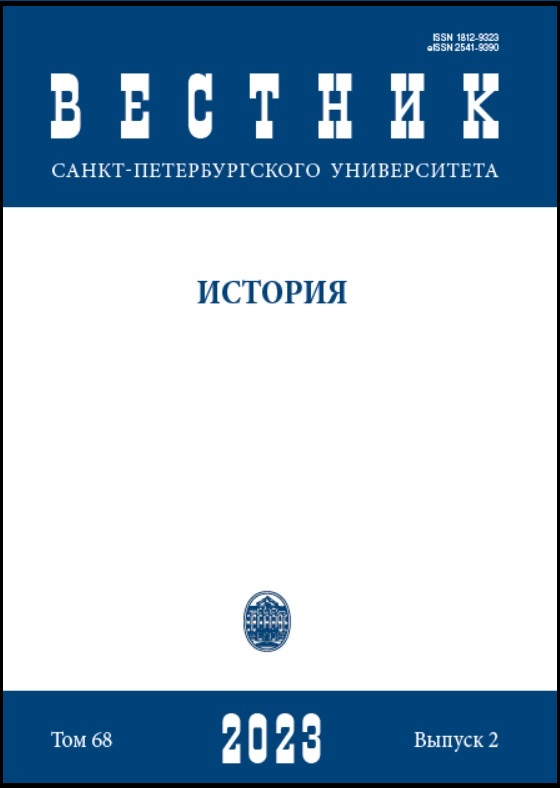The Russian Empire as a Regulator of the Hajj and Russian Orthodox Pilgrimage
DOI:
https://doi.org/10.21638/spbu02.2023.215Abstract
The work by Eileen Kane on the Russian Empire’s experience of regulating the hajj — the Muslim pilgrimage from the Volga region, the Caucasus, and Central Asia to the Middle East — is of interest not only from the perspective of Asian and African studies or the history of religion. It is also, potentially, a comparative study as the author illustrates her observations and conclusions by referring to Russia’s policies towards the Christian populations of the Arab provinces of the Ottoman Empire. E. Kane advances a debatable thesis that Russia provided unofficial support for the hajj undertaken by its subjects. Whereas the patronage of Russian Orthodox pilgrimage was fully in line with Russia’s geopolitical role in the Middle East as well as with the tsarist ideology, open declaration of its interest in an organized hajj was out of the question for the Russian government. The idea of regulating the hajj was consistent with Russia’s need to integrate its Muslim subjects into the empire in order to secure the imperial rule. In the Ottoman Empire, adherents of various religions united under one dynasty and entitled to its consular protection can be viewed from the perspective of comparative historical research and the authorities’ general idea of imperial unity. In this case, the modes of comparison can be the following: the appropriation by the authorities of the traditions of pilgrimage and the hajj; their modernization; controversies in implementing the policies; consular protection; the subjugation of the clergy to the imperial bureaucracy. The profound differences between the two religious cultures, Christianity and Islam, resulted in the differences between Russia’s Muslim and Orthodox presence in the Middle East. In the late 19th century, Orthodox subjects of the tsar upon arriving at the destination of their pilgrimage, were offered the services
of the Imperial Orthodox Palestine Society: they could use the accommodation owned by the “Russian Palestine”, and were provided with spiritual guidance by the Russian Orthodox ecclesiastical mission in Jerusalem. Muslim subjects of the tsar did not enjoy the same level of official protection.
Keywords:
Russian Empire, Islam, pilgrimage, Eastern Orthodox Christianity, hajj, Ottoman Empire, Central Asia
Downloads
References
Downloads
Published
How to Cite
Issue
Section
License
Articles of "Vestnik of Saint Petersburg University. History" are open access distributed under the terms of the License Agreement with Saint Petersburg State University, which permits to the authors unrestricted distribution and self-archiving free of charge.





